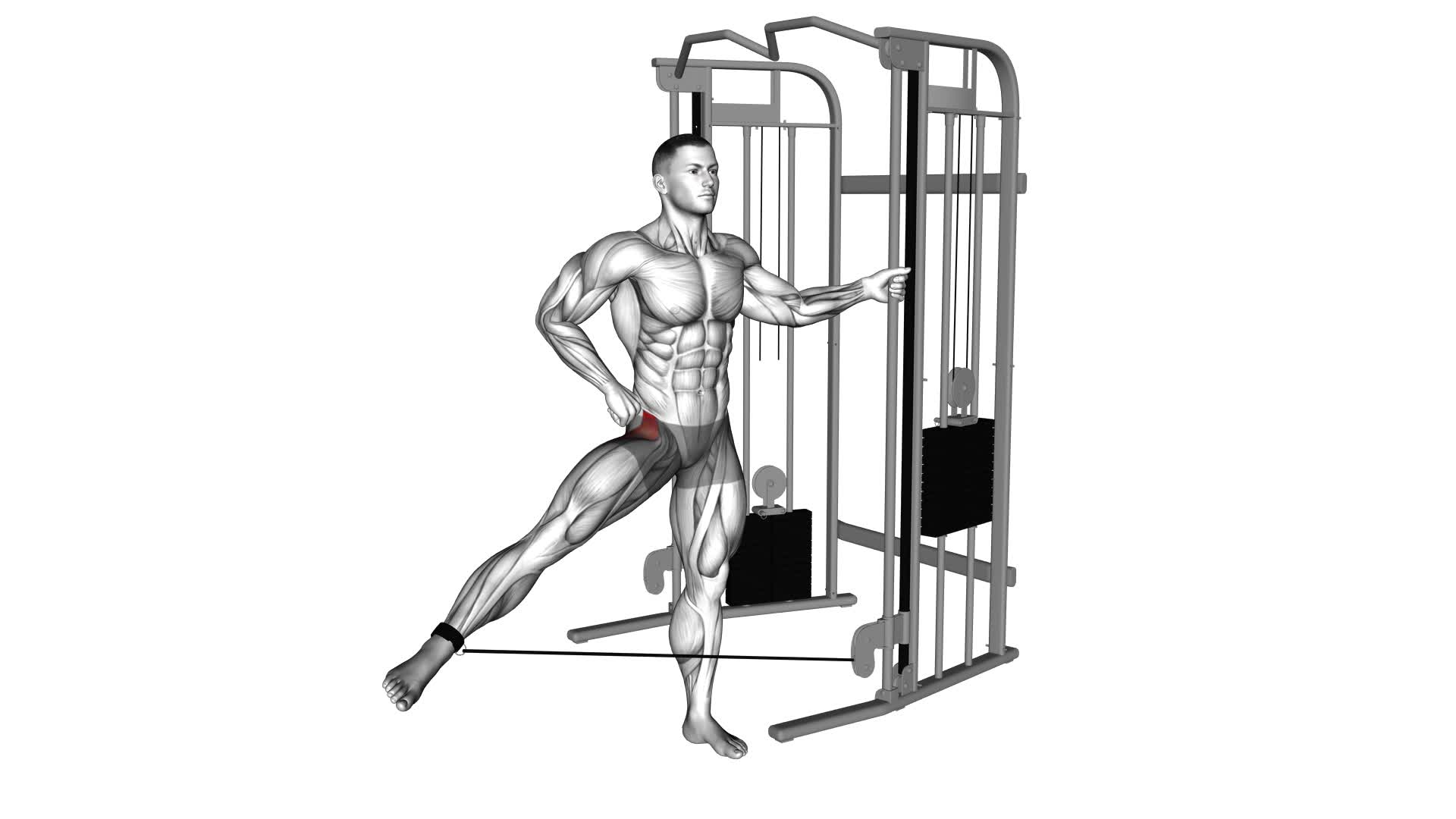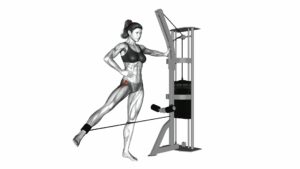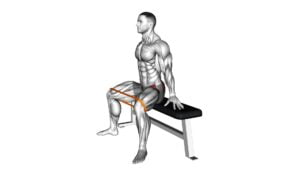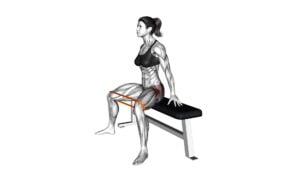Cable Hip Abduction (Version 2) (Male) – Video Exercise Guide & Tips

Looking to tone and strengthen your hips? Look no further than Cable Hip Abduction (Version 2).
Watch This Exercise Video
This exercise targets the muscles in your hips and glutes, helping to improve stability and overall lower body strength.
In this video exercise guide, you'll learn the proper form and technique for performing Cable Hip Abduction (Version 2), along with tips for maximizing your workout.
Get ready to feel the burn and achieve those hip goals!
Key Takeaways
- Cable hip abduction targets muscles in the hips and glutes, improving stability and lower body strength.
- This exercise specifically targets the gluteus medius and minimus, which are often neglected in traditional leg exercises.
- Cable hip abduction enhances balance and reduces the risk of injuries, making it important for functional movements like walking, running, and squatting.
- It is recommended to gradually increase intensity and resistance over time, while prioritizing proper form and technique to minimize the risk of injury.
Benefits of Cable Hip Abduction (Version 2)
The benefits of cable hip abduction (Version 2) include increased hip strength and improved stability.
Cable hip abduction is an effective exercise technique that targets the muscles in your hips, specifically the gluteus medius and minimus. By using a cable machine, you can perform this exercise in a controlled and efficient manner.
One of the main benefits of cable hip abduction is the improvement in hip strength. This exercise specifically targets the muscles responsible for hip abduction, which are often neglected in traditional leg exercises. By strengthening these muscles, you can enhance your overall lower body strength and functionality.
In addition to increased hip strength, cable hip abduction also improves stability. The gluteus medius and minimus play a crucial role in stabilizing the hips during movements such as walking, running, and jumping. By strengthening these muscles through cable hip abduction, you can enhance your balance and stability, reducing the risk of injuries during physical activities.
To perform cable hip abduction, attach an ankle strap to the cable machine and secure it around your ankle. Stand with your side facing the machine and slowly move your leg away from your body, keeping it straight. Return to the starting position and repeat on the other side. Aim for 10-12 repetitions on each leg for optimal results.
Equipment Needed for Cable Hip Abduction (Version 2)
To perform cable hip abduction (Version 2), you'll need a cable machine and an ankle strap. The cable machine is essential for providing the resistance needed to effectively work your hip abductor muscles. It consists of a weight stack and a pulley system that allows you to adjust the resistance according to your fitness level. An ankle strap is necessary to attach the cable to your leg securely.
While cable hip abduction (Version 2) is an effective exercise, there are alternatives if you don't have access to a cable machine. You can use resistance bands or a hip abduction machine as substitutes. Resistance bands offer a portable and affordable option that can be used anywhere. The hip abduction machine, commonly found in gyms, provides a guided movement pattern and adjustable resistance.
When performing cable hip abduction (Version 2), it's important to avoid common mistakes to ensure proper form and maximize results. One common mistake is using too much weight, which can compromise your form and increase the risk of injury. Start with a lighter weight and gradually increase as your strength improves. Another mistake is leaning forward or backward during the exercise, which takes the focus away from the hip abductor muscles. Keep your torso upright and engage your core to maintain proper alignment.
Proper Form and Technique for Cable Hip Abduction (Version 2)
To perform cable hip abduction (Version 2) correctly, you should consistently engage your core throughout the exercise. This will help maintain stability and protect your lower back. Here are some important tips to keep in mind:
- Stand beside the cable machine with your feet shoulder-width apart and the cable attachment at ankle height.
- Attach the ankle cuff to your outer ankle and stand far enough away from the machine to create tension on the cable.
- Keep your torso upright and your shoulders relaxed throughout the movement.
- Slowly lift your leg out to the side, away from the machine, while keeping your knee straight.
- Pause for a moment at the top of the movement, then slowly return your leg to the starting position.
- Repeat for the desired number of repetitions and then switch sides.
It's important to avoid these common mistakes while performing cable hip abduction:
- Allowing your upper body to lean excessively towards the machine.
- Bending your knee during the movement.
- Using momentum to swing your leg out to the side.
Cable hip abduction (Version 2) primarily targets the gluteus medius and minimus muscles, which are located on the side of your hip. These muscles are important for hip stability and helping to prevent injuries. By performing the exercise with proper form and technique, you can effectively strengthen and tone these muscles.
Variations and Progressions of Cable Hip Abduction (Version 2)
Once you have mastered the basic cable hip abduction (Version 2) exercise, you can explore different variations and progressions to further challenge your gluteus medius and minimus muscles.
One way to vary the exercise is by adjusting the resistance level. You can increase the weight on the cable machine to make it more challenging for your muscles. Gradually increasing the resistance over time will help you continue to make progress and build strength.
Another variation is to perform the exercise with a single leg. This unilateral movement not only targets the gluteus medius and minimus muscles but also engages your core for stability. Start by standing sideways to the cable machine with one foot attached to the ankle strap. From there, perform the hip abduction movement, focusing on maintaining proper form and control.
When performing cable hip abduction (Version 2), it's important to be aware of common mistakes. One common mistake is using momentum to swing the leg outwards instead of using the muscles to control the movement. This reduces the effectiveness of the exercise and increases the risk of injury.
Another mistake is allowing the torso to rotate or lean during the movement. To avoid this, engage your core and maintain a stable posture throughout the exercise.
Tips for Maximizing Your Cable Hip Abduction (Version 2) Workout
To maximize your cable hip abduction (Version 2) workout and further challenge your gluteus medius and minimus muscles, focus on maintaining proper form and control while avoiding common mistakes. Here are some tips to help you get the most out of your workout:
- Keep your core engaged throughout the exercise to maintain stability and prevent any unnecessary movement.
- Avoid using momentum or swinging your leg during the movement. This can diminish the effectiveness of the exercise and put strain on other muscles.
- Control the speed of the movement, focusing on a slow and controlled motion both when moving your leg outwards and when bringing it back in.
By following these tips, you can ensure that you're targeting your glute muscles effectively and minimizing the risk of injury.
In terms of recommended sets and reps, it's generally recommended to start with 2-3 sets of 10-12 repetitions per leg. However, it's important to listen to your body and adjust the intensity as needed. As you progress and get stronger, you can gradually increase the number of sets or repetitions to continue challenging your muscles. Remember to always prioritize proper form and technique over the number of repetitions.
Frequently Asked Questions
How Many Sets and Reps Should I Do for Cable Hip Abduction (Version 2)?
To determine the number of sets and reps for cable hip abduction (version 2), consider your fitness level and goals.
Cable hip abduction variations are effective for strengthening the hip muscles. Alternatives exercises for hip strengthening include band hip abductions and side-lying leg raises.
It's recommended to start with 2-3 sets of 10-15 reps, gradually increasing the intensity as you progress.
Remember to maintain proper form and consult a fitness professional for personalized guidance.
Is Cable Hip Abduction (Version 2) Suitable for Beginners?
Cable Hip Abduction (Version 2) is a great exercise for beginners looking to target their hip muscles. It involves using a cable machine to perform a controlled movement that strengthens and tones the hip abductors.
The exercise can be modified to match different fitness levels, allowing individuals to increase or decrease the resistance as needed.
Additionally, there are variations of Cable Hip Abduction (Version 2) that can specifically target different muscles, providing a more targeted and effective workout.
Can Cable Hip Abduction (Version 2) Help With Hip Mobility?
Cable hip abduction (version 2) can greatly improve your hip mobility. This exercise targets the muscles responsible for hip abduction, helping to increase your range of motion and flexibility.
By incorporating cable hip abduction into your workout routine, you can experience the benefits of improved hip mobility, such as enhanced athletic performance and reduced risk of injury.
Can I Perform Cable Hip Abduction (Version 2) With Ankle Weights for Added Resistance?
Yes, you can definitely perform cable hip abduction (version 2) with ankle weights for added resistance. This can help to further strengthen your hip muscles and increase the intensity of the exercise.
Ankle weights are a great alternative to increase resistance if you don't have access to cable machines. It's important to start with lighter weights and gradually increase as you get stronger to avoid straining your muscles.
Remember to maintain proper form and technique throughout the exercise.
How Often Should I Incorporate Cable Hip Abduction (Version 2) Into My Workout Routine?
To effectively strengthen your hip muscles, cable hip abduction (version 2) is a great exercise to incorporate into your lower body workout routine. It targets the hips, glutes, and outer thighs.
However, it's important to vary your routine to prevent muscle imbalances and boredom. Consider incorporating alternatives such as lateral lunges, clamshells, or resistance band exercises.
Aim to perform cable hip abduction (version 2) two to three times a week, allowing for proper rest and recovery between sessions.
Conclusion
In conclusion, cable hip abduction (version 2) is a highly effective exercise for targeting and strengthening the hip abductor muscles.
By using the cable machine, you can add resistance and challenge to your workout, leading to improved muscle tone and stability.
Remember to maintain proper form and gradually increase the weight as you progress.
With consistency and proper technique, cable hip abduction (version 2) can help you achieve your fitness goals and enhance your overall lower body strength.

Author
Years ago, the spark of my life’s passion ignited in my mind the moment I stepped into the local gym for the first time. The inaugural bead of perspiration, the initial endeavor, the very first surge of endorphins, and a sense of pride that washed over me post-workout marked the beginning of my deep-seated interest in strength sports, fitness, and sports nutrition. This very curiosity blossomed rapidly into a profound fascination, propelling me to earn a Master’s degree in Physical Education from the Academy of Physical Education in Krakow, followed by a Sports Manager diploma from the Jagiellonian University. My journey of growth led me to gain more specialized qualifications, such as being a certified personal trainer with a focus on sports dietetics, a lifeguard, and an instructor for wellness and corrective gymnastics. Theoretical knowledge paired seamlessly with practical experience, reinforcing my belief that the transformation of individuals under my guidance was also a reflection of my personal growth. This belief holds true even today. Each day, I strive to push the boundaries and explore new realms. These realms gently elevate me to greater heights. The unique combination of passion for my field and the continuous quest for growth fuels my drive to break new ground.







